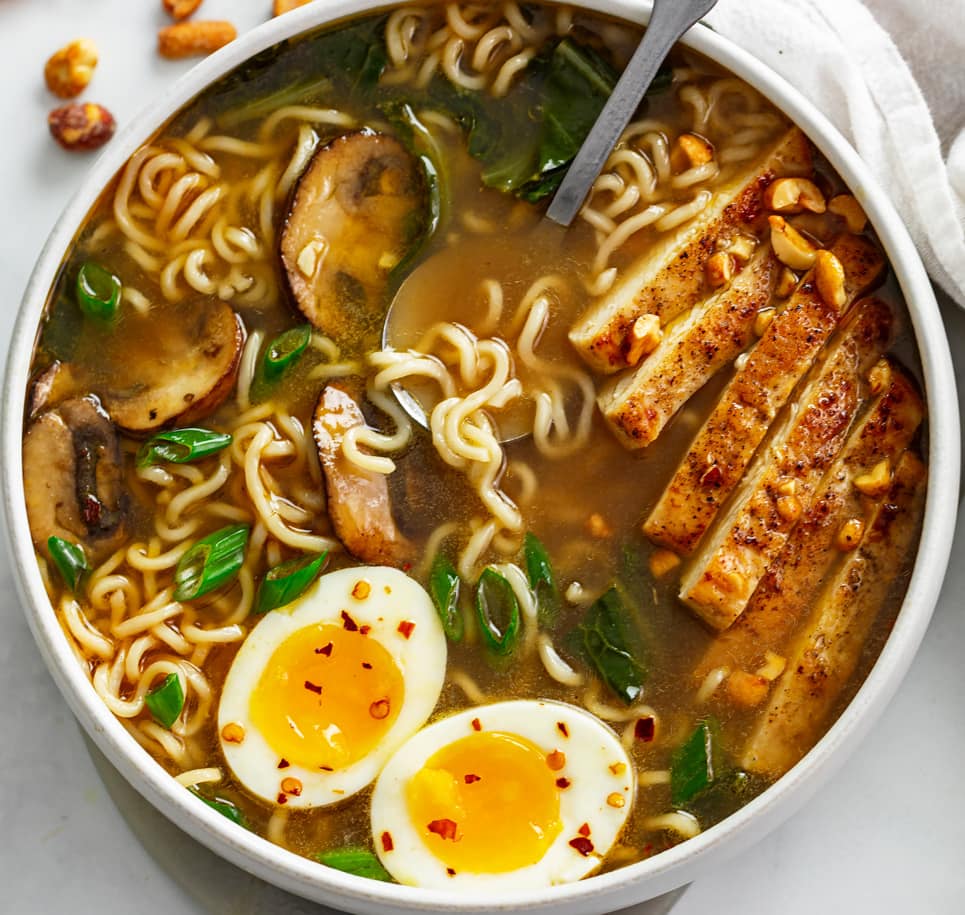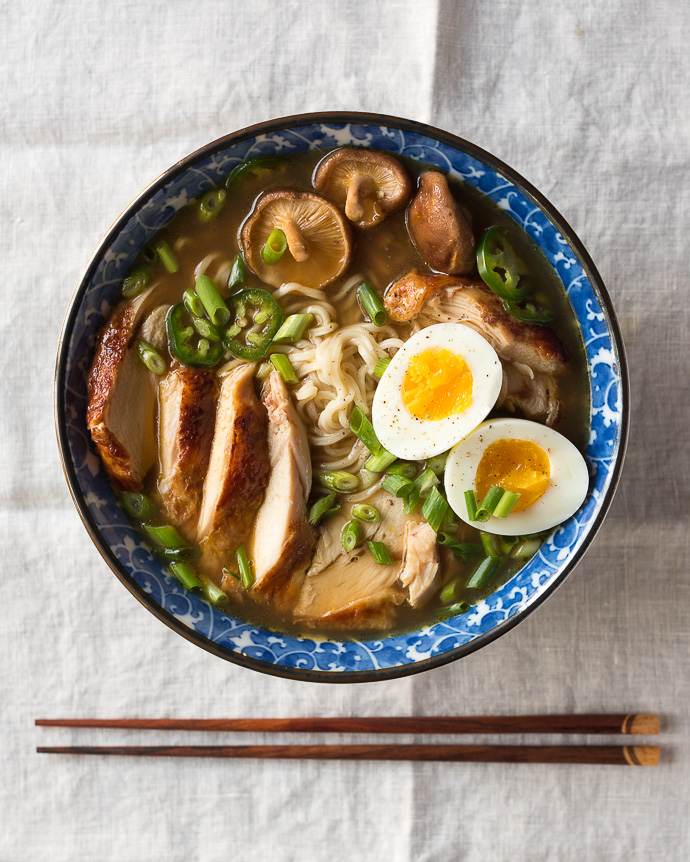There's something truly special about a comforting bowl of ramen, isn't there? The rich, savory broth, the perfectly cooked noodles, and all those wonderful toppings just make for a meal that feels like a warm hug. Yet, like with any food we enjoy, there's always a quiet thought about making sure it's safe to eat, a concern that can sometimes pop into your head, you know, when you're really looking forward to that first slurp.
You might think of those amazing tonkotsu temples or the places offering modern mazemen, which are, in some respects, among the absolute best bowls of ramen you can find, especially here in New York City. Common tastes, like soy sauce and miso, often come with typical additions such as thinly cut pork, that crisp dried seaweed, tender bamboo shoots, and fresh green onions. It's almost as if nearly every part of Japan has its own unique take, and since visiting Japan in 2018, I’ve found it quite a challenge to truly satisfy my longing for that particular kind of ramen here.
In an effort to change that feeling, I actually started a little quest to try as much ramen as I could possibly manage to eat over a period of time, just to find those spots that really get it right. It’s all about getting that real Japanese ramen experience, whether you're sitting in a quiet solo dining booth enjoying your own special tonkotsu ramen in peace, or just enjoying the vibrant atmosphere of a busy spot. But for all that goodness, a little worry about potential issues, like some kind of ramen contamination, can certainly come up, and it's good to be aware of what makes a bowl not just tasty, but also truly safe.
- Fat Elon Musk
- Male Masturbatory Techniques
- Laura San Giacomo
- What Year Was Slavery Abolished
- Chase Home Lending
Table of Contents
- What Makes Ramen So Appealing Anyway?
- The Good Stuff - Avoiding Ramen Contamination
- What Are Some Common Ways Food Can Go Wrong?
- Keeping Ingredients Safe - Preventing Ramen Contamination
- How Do Restaurants Keep Things Clean?
- The Role of Temperature - Limiting Ramen Contamination
- Can You Spot Issues With Your Ramen?
- When to Be Wary - Signs of Possible Ramen Contamination
What Makes Ramen So Appealing Anyway?
There's a reason so many folks talk about ramen in New York, NY, and why places like Momosan really put their noodles front and center. It’s not just about the noodles themselves, but the whole experience, you know? Whether someone is enjoying a bowl of their special tonkotsu ramen, or maybe a Tokyo chicken ramen, a tantan, or even a tsukemen, you often come to realize that the quality you find there is something truly special. Nearly every area in Japan, it seems, has its own unique version, each with its own special touches that make it stand out. This vegetarian ramen shop, for instance, is truly delicious, showing that there's something for everyone.
The Good Stuff - Avoiding Ramen Contamination
So, when we talk about all these wonderful bowls, from vegetarian options to those "triple pork" creations, it's clear there's a lot of love and care that goes into them. To keep that experience pure, and to make sure you're always getting the good stuff, avoiding ramen contamination is something everyone involved, from the people making it to the people eating it, should probably think about. It's about maintaining a certain standard, you see, so that every spoonful tastes just as it should, without any worries.
What Are Some Common Ways Food Can Go Wrong?
Food, generally speaking, can actually go wrong in a few different ways, which is why thinking about ramen contamination is a good idea. Sometimes, it's about tiny living things, like bacteria or viruses, that you can't see or taste, but they can make you feel unwell. These might come from raw ingredients, or maybe from someone's hands if they haven't been washed properly. Other times, it could be something chemical, like a cleaning product that wasn't rinsed away, or perhaps some leftover residue from growing the vegetables, though that's less common in a well-run kitchen, you know. And then, there are physical things, like a stray hair, or a piece of packaging, or even a tiny bit of something from the kitchen equipment that might accidentally fall into the bowl. These things, while not always dangerous, can certainly ruin the enjoyment of your meal, that's for sure.
Keeping Ingredients Safe - Preventing Ramen Contamination
To make sure your ramen is as wonderful as it should be, keeping the ingredients safe is, well, pretty important for preventing ramen contamination. Think about the pork, for instance, that becomes chāshū; it needs to be kept at the right cool temperature from the moment it arrives until it's cooked. Noodles, too, even if they're dried, need proper storage to keep them fresh and free from moisture that might invite unwanted growth. Vegetables like scallions and bamboo shoots, or even the seaweed, should be handled cleanly, washed well if needed, and stored separately from raw meats. This basic idea of keeping raw and cooked items apart, and making sure everything is clean from the start, really goes a long way in protecting what you're about to eat. It’s a simple step, but honestly, it makes all the difference in the world for food safety.
How Do Restaurants Keep Things Clean?
So, you might wonder, how do these places, especially those offering an authentic Japanese ramen experience in New York City, keep everything so neat and tidy? It’s more than just wiping down counters, you know. It actually involves a whole system of keeping things clean, from the moment ingredients come through the door to when your bowl is placed in front of you. This includes making sure all surfaces where food is prepared are regularly cleaned and sanitized. Staff members typically get training on how to handle food properly, like washing their hands often, especially between different tasks, and using separate cutting boards for raw meats and fresh vegetables. This helps avoid mixing things that shouldn't be mixed. It’s about creating an environment where the chances of any kind of ramen contamination are kept very, very low, allowing you to just enjoy your meal without a second thought. Robert Sietsema, the former Eater NY senior critic with more than 35 years of experience covering dining in New York City, has probably seen his fair share of kitchens, and you can bet that cleanliness is always a big part of what makes a place stand out.
The Role of Temperature - Limiting Ramen Contamination
Temperature plays a really big part in limiting ramen contamination, more than some people might realize. It’s a simple rule: keep hot food hot and cold food cold. The broth, for example, which can simmer for hours, needs to be kept at a very warm temperature to keep anything bad from growing. If it cools down too much and sits for a while, that's when problems can start. Similarly, the cooked pork or eggs, if they're prepared ahead of time, need to be cooled down quickly and stored in the refrigerator, and then heated up to a safe temperature again before serving. This careful control of heat and cold, you know, makes a huge difference in keeping the food safe to eat. It’s about stopping those tiny, unwanted guests from multiplying, which they tend to do very quickly in lukewarm conditions. This is why places that really care about their food often have strict rules about how long things can sit out, and what temperatures everything should be at.
Can You Spot Issues With Your Ramen?
As a diner, you actually have a role to play too, in a way, when it comes to making sure your ramen experience is a good one. While you can't see germs, you can certainly use your senses to spot potential issues. Before you even take that first spoonful, just take a moment to look at your bowl. Does it look fresh and appealing? Are the colors bright and natural? What about the smell? Does it smell like delicious ramen, or is there anything that seems a little off? Sometimes, your gut feeling about how something looks or smells can tell you a lot. It’s just about being a little observant, you know, not overly worried, but just paying attention to what’s in front of you. This simple check can help you feel more confident about enjoying your meal, and it’s a good habit to have when eating out.
When to Be Wary - Signs of Possible Ramen Contamination
So, when should you actually be a little wary, or look for signs of possible ramen contamination? Well, if the broth looks cloudy in a way that doesn't seem right for the type of ramen, or if it has an unusual separation, that could be a subtle hint. If the meat, like the chāshū, appears discolored, or if it feels slimy to the touch (though you probably won't be touching it, you know), that’s certainly a red flag. Any sort of sour or strange smell that isn't typical for ramen is also a very clear sign to perhaps stop and think. Noodles that are unusually sticky or mushy, beyond what's expected, could also suggest an issue. It’s really about trusting your senses; if something just doesn't seem quite right, it's probably best to be cautious. After all, you want to enjoy every single bit of that delicious bowl, especially when fall's first frost is almost upon us, marking the perfect time for a warm, comforting meal.
Related Resources:



Detail Author:
- Name : Mrs. Janice Senger DDS
- Username : bartoletti.lincoln
- Email : orion41@gmail.com
- Birthdate : 1993-03-08
- Address : 97205 Carmelo Village North Brenden, FL 95093
- Phone : 262-304-4322
- Company : Waters LLC
- Job : Operations Research Analyst
- Bio : Assumenda hic harum porro. Optio at sunt quasi facilis saepe. Dolores et beatae veniam aut et sit.
Socials
linkedin:
- url : https://linkedin.com/in/luciennehamill
- username : luciennehamill
- bio : Ipsam minus tenetur reiciendis aut.
- followers : 1102
- following : 2466
tiktok:
- url : https://tiktok.com/@lucienne_dev
- username : lucienne_dev
- bio : Dolorum fugit quaerat laboriosam. Eos itaque amet incidunt.
- followers : 2507
- following : 1734
instagram:
- url : https://instagram.com/lucienne.hamill
- username : lucienne.hamill
- bio : Natus ut officia sint animi. Qui rerum repellendus ipsam.
- followers : 946
- following : 927
facebook:
- url : https://facebook.com/hamilll
- username : hamilll
- bio : Dicta rerum assumenda rerum sunt eum. Sit aliquam natus ad et est asperiores.
- followers : 123
- following : 537